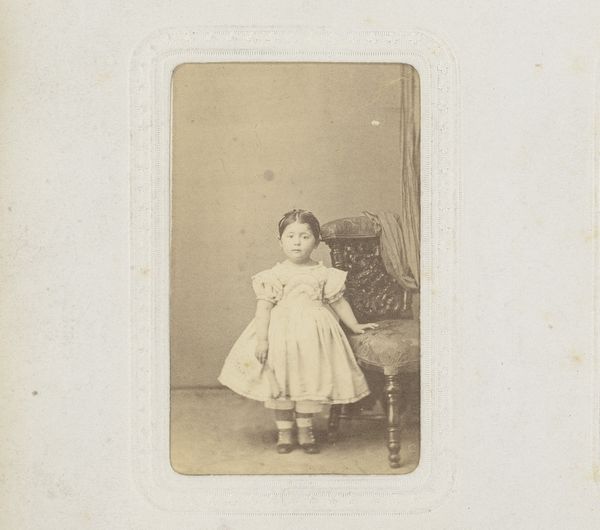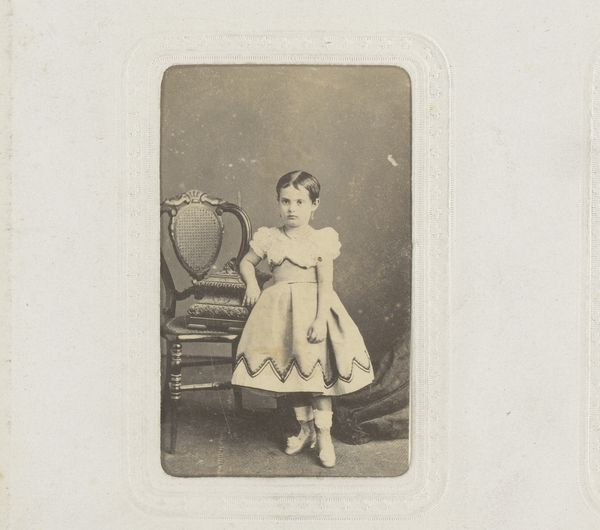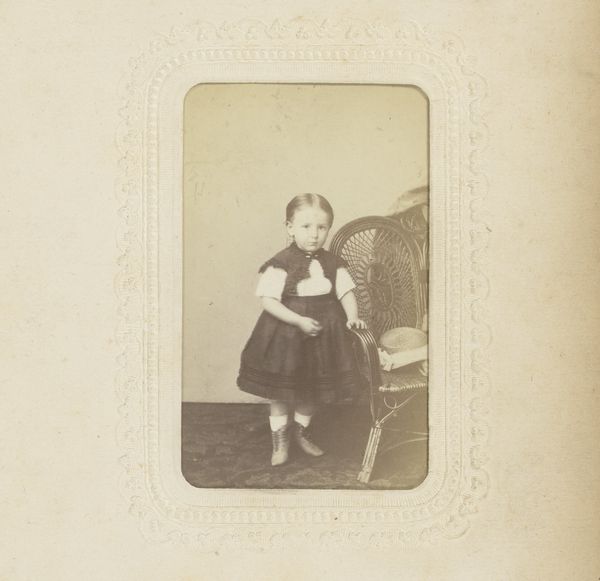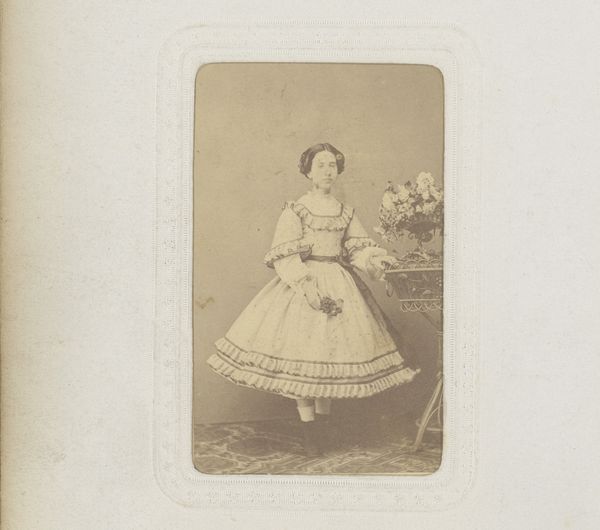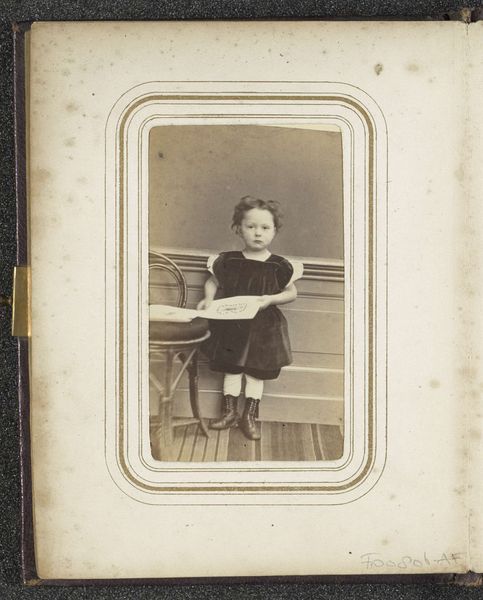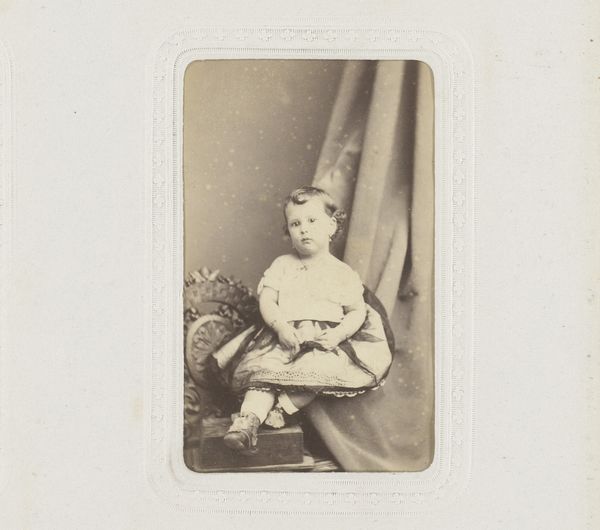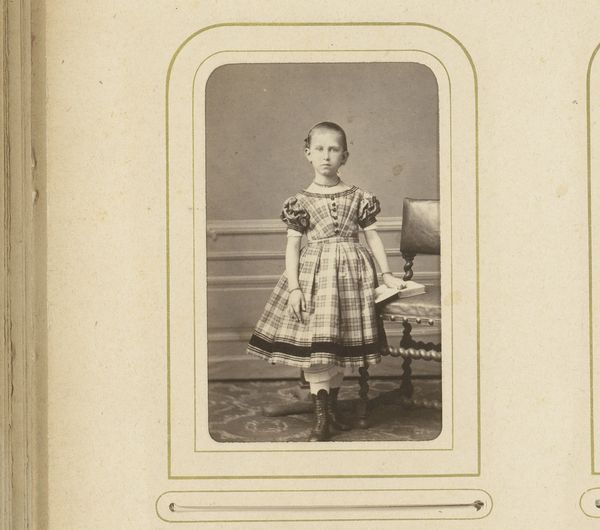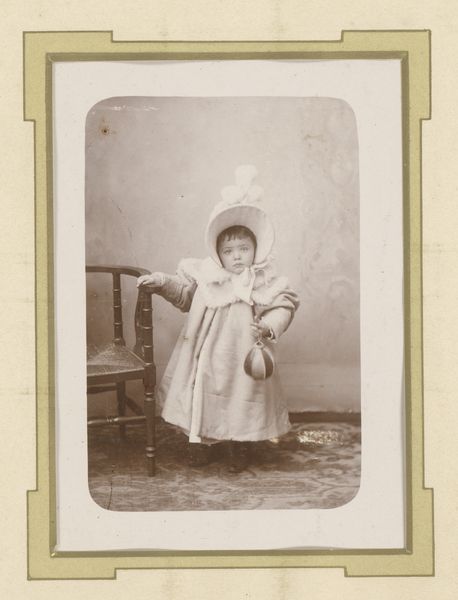
photography
#
portrait
#
photo of handprinted image
#
aged paper
#
toned paper
#
photo restoration
#
light coloured
#
white palette
#
archive photography
#
photography
#
historical photography
#
old-timey
#
19th century
Dimensions: height 86 mm, width 52 mm
Copyright: Rijks Museum: Open Domain
Curator: Here we have an intriguing photographic portrait dating from between 1860 and 1890, entitled "Portret van een meisje, staand bij een balustrade"—Portrait of a Girl Standing by a Balustrade. Editor: My immediate impression is one of formality, but also slight melancholy. The girl's pose is stiff, and the sepia tones add to a sense of faded grandeur. It makes me wonder about her story. Curator: Note how the composition centers the girl almost symmetrically. The verticality of the balustrade and curtain in the background firmly anchors her figure within the frame, emphasizing stability and perhaps constraint. Editor: Looking closer, I wonder what this portrait was meant to achieve? Who commissioned it? Was it simply a record of her likeness or an attempt to elevate her status within the societal framework of that era? The dress, so elaborate, almost overwhelms her. Curator: Indeed. Consider also the distribution of light. The subject is illuminated softly, but it accentuates the intricate details of her attire—the plaid dress, the lace trimming—emphasizing texture and depth, yet it also reveals the starkness in her facial expression. The light, however subdued, calls attention to the material details. Editor: I find myself drawn to the background details: the patterned carpet and simple curtain give clues about the setting but without fully revealing it. What social conventions dictated such a carefully staged presentation? The balustrade seems symbolic, a physical manifestation of barriers perhaps? Curator: The lack of clear narrative elements further underscores its semiotic richness. The young girl gazes outwards at the viewer and inwards perhaps. The texture of the backdrop, the light playing on the fabric, all work together to produce a study in muted visual texture and subtle tones. Editor: For me, seeing this work today is a reminder of photography's role in shaping historical narratives. It makes me question the power dynamics inherent in image-making and challenges me to look beyond the surface to understand the story that might have been intentionally hidden, or perhaps unwittingly revealed. Curator: I'm left reflecting on the sheer craftsmanship inherent in such early photographic techniques. Each element—composition, tone, texture—harmonizes to evoke a moment frozen in time, with a kind of emotional echo resounding into our own present.
Comments
No comments
Be the first to comment and join the conversation on the ultimate creative platform.
